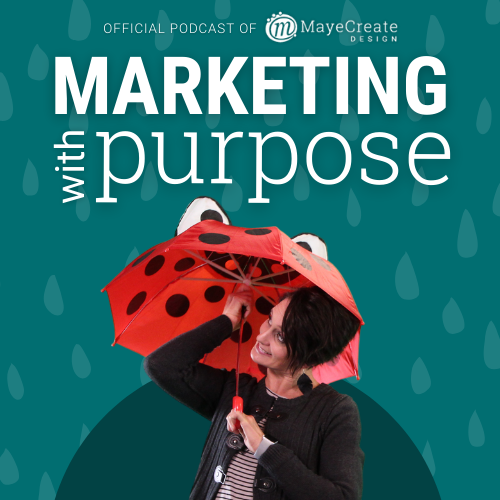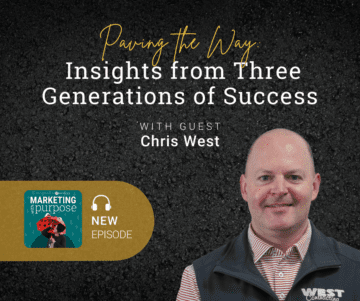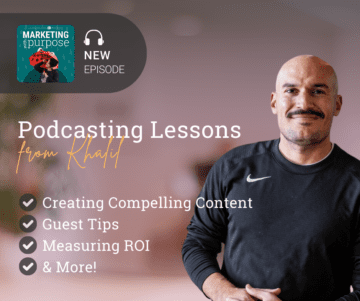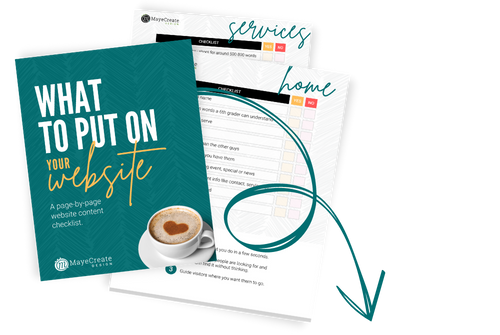6 Things You Can Learn About SEO from a Recipe Blogger
June 4, 2020

CONSUME CREATIVELY
This content is available in:
This content is available in:
AUDIO
TEXT
There’s nothing more annoying than clicking on a recipe and being greeted by a wall of text. It’s like the author is just talking to hear themselves talk. All that stuff we want is hidden at the bottom of the page under a wall of stories and kitschy photos of the dish.

And then I got to thinking about it, and realized actually, as annoying as it is, they’re actually quite good at what they do, and we can all learn a thing or two from a recipe blogger.
It’s like they don’t care about you at all! You want to check out the ingredients. Do they sound good together? Do you have them on hand? How long is it going to take to make the darn recipe? You’re there to make a decision. To gauge if you want to even bother with the dish or move on to another option.
WHY DO THEY DO THAT?
As annoying as it is, their tactics work. There’s a reason we found that recipe. A reason we clicked on it and ended up wading through that annoying pool of text. Let’s dissect the art of a cooking blog to apply it to our own sites. And maybe the next time you end up on a recipe blog you can just give ‘em a nod for a job well done and scroll to the bottom of the page to find what you want!
Long(ish)-form, keyword-rich content ranks.
You searched for the name of the recipe that you wanted. And then you clicked on a link that contained the name of the recipe. This is the beginning of keyword-rich content.
Then comes the obnoxious wall of fiddle-faddle at the beginning of that blog post. Because recipe bloggers know they need somewhere between 750 and 2,000 words to get google to quickly pick up and display their posts. If all they did was post a bulleted list of ingredients and an abbreviated list of instructions. You wouldn’t find their recipe in your search results. Google needs to be able to scan through a page and see evidence that correlates it back to what you’re searching for. It wants to absolutely know it’s delivering the best results for the key term you searched for and long form content is the quickest way to make that connection.
They talk about how to cook it, different things you can substitute in and out of it. They talk about every ingredient that’s inside of it and where you can buy it. They do that, because then when you search for that recipe name, plus the ingredient you want to put in it, their blog post will be more likely to show up on google for that search.
Great photos sell.
This is true everywhere. Whether it’s a pair of shoes, a parking lot, or a recipe. People make buying decisions visually as much as emotionally. You want the thing that looks the best. All those pictures of hot yummy cookies broken open with chocolate dripping down the side make you want to eat that cookie. So you click on the recipe.
You know what else great photos will sell? Your service.
Think about your service the way bloggers, think about a recipe. They know what you need to see to want to make that recipe. You want to see the cookie dough and the inside of the cookies. Cookies stacked next to a glass of milk. That’s what sells this recipe.
What sells your service or product? It could be a great quality for the price or the people that make it happen. Show people the awesome professionals you have working for you doing their jobs and photos of the complete product. Maybe it’s the process you take people through to reduce stress and less time wasted by decision makers because they choose to with a professional who knows how to do it right the first time. Show people a timeline of a project from start to finish with photos of each step along the way and what to expect during that step. Tell your story with great photos.
Accurate yet enticing titles and descriptions get clicks.
You clicked on the recipe because you thought it was what you wanted. How’d you know? Because they gave you an accurate title and description. But you probably clicked because of more than just accuracy alone – the title appealed to you. It probably said something like best ever, super tasty, easy or quick.
[cta_left id=”28″]
The title and description are more than just components of your web page. They are ad copy, a headline and a supporting clause. And you choose the link you clicked on because of your current decision making factors: taste, time, ingredients, cooking level, etc. The title allowed you to quickly evaluate if this is the right recipe for you.
Tell me, how different are your buyers? They too are faced with a wall of search results, just like you were when you searched for a recipe. What are the things that make them click on the link? Think back to your competitive advantages. Think back to your audience’s decision making factors. Talk about those things in your page titles and descriptions.
Here’s the reality though, just because you crafted an amazing title and description, that doesn’t mean Google will actually use them. Google takes these as a “suggestion”. If your title and description don’t match the content you have on the page Google certainly won’t use them. One thing’s for sure though – it’s better to give Google something to start with than let it make stuff up on its own. Sometimes even the search robot gets confused and includes weird stuff like the links from the bottom of your page. So throw your hat in the ring at least. You can’t win if you don’t play.
Proper markup gives you priority.
Now, this is going to get a little technical, but for many types of web content, Google prefers a particular markup to better identify it. For example, there’s a specific markup for recipes to tell Google that there are recipes. You may have content on your website you could better identify for Google. It might be your contact information, job postings or blog posts. Ultimately, when you give Google these little tips about your content using a thing called schema markup. It can identify the content type faster and it will be more likely to list it with priority. Similar to that recipe you clicked on with the picture above it when you could have scrolled down to the recipes listed below it with no pictures at all.

I’m not saying you have to have schema markup to gain the favor of Google. I’m saying it helps and we need every edge we can get out there in this cookie eat cookie world.
Consistent formatting appeals to viewers.
You know what every recipe post has in common, other than that obnoxious wall of text? A recipe at the bottom of the page. And almost all of the posts highlight the recipe on a different color background or they put it in a box, they add a clear title above it. First the ingredients are listed and then below the instructions. All of the recipe blogs are formatted the same. And that’s how you know to scroll to the bottom of the page to get what you want even when you’ve never been there before. You know that’s where the recipe is going to be. And you know when to stop scrolling because you’re given a visual indicator when the recipe starts. They all use this methodology. Is that creepy or is it awesome? The jury is out on that one.
You can do this on your website, too.
For example, leave your navigation in the same spot all the time and put it at the top or on the side where people know to look for it. Your services pages can be formatted similarly, blog posts should look the same, all of your content should share similar formatting tactics. If you don’t know how you want to format your content, then look at how other people do it. If you’re going to post job listings, format them like the biggest job sites out there. Look at LinkedIn and Indeed, how are they posting their job listings? What content do they share and how is it formatted? That’s what job seekers are used to looking at when searching for a job. Give it to them in the same format that they’re used to, just like the recipe bloggers do for you. Mirroring a layout they already know keeps them feeling in control and comfortable. That consistency builds trust and trust builds relationships. Regardless of the decision they’re considering with your company, whether it’s a career move or a service purchase, trust will aid the transaction.
People will scroll. Even if they hate it.
I have so many clients that tell me, “I don’t want to put all these words on my pages. People don’t want to read and I don’t want them to have to scroll. Scrolling is annoying.” I’m not going to argue with you about how annoying it is to have to scroll to find what you want. And we already discussed that it’s easier to get your page to rank if you have a lot of words. That’s a moot point – you have to get your page to rank for people to find it. But here’s the deal – you and I both know we scroll through a recipe blog to get to what we want. So, people will scroll.
As they’re scrolling. We have the opportunity to entice them to stop, look at things like our beautiful photos and draw them into the story that we’re telling along the way. As they scroll we have the opportunity to catch their attention again and entice them to read the things that we wanted them to read. Because they will do it. They will scroll. So even though you don’t want to make them do it, it’s more important to get your page to show up than it is to eliminate even the slightest hint of scrolling threat.
So as much as you may hate the recipe bloggers for all their annoying tactics. Now you know why they do it because it works.
I’m not suggesting you should be annoying and tell stupid useless stories before you get to the point on the pages of your site. I am suggesting you take a look at the way these recipe bloggers reeled you in and how they successfully rank their content on Google. We can all learn a thing or two from them and maybe if we do it right, get our content to rank too.
Who Manifested This Madness?

This fabulous human, that's who.
Monica Maye Pitts
Monica is the creative force and founder of MayeCreate. She has a Bachelor of Science in Agriculture with an emphasis in Economics, Education and Plant Science from the University of Missouri. Monica possesses a rare combination of design savvy and technological know-how. Her clients know this quite well. Her passion for making friends and helping businesses grow gives her the skills she needs to make sure that each client, or friend, gets the attention and service he or she deserves.






